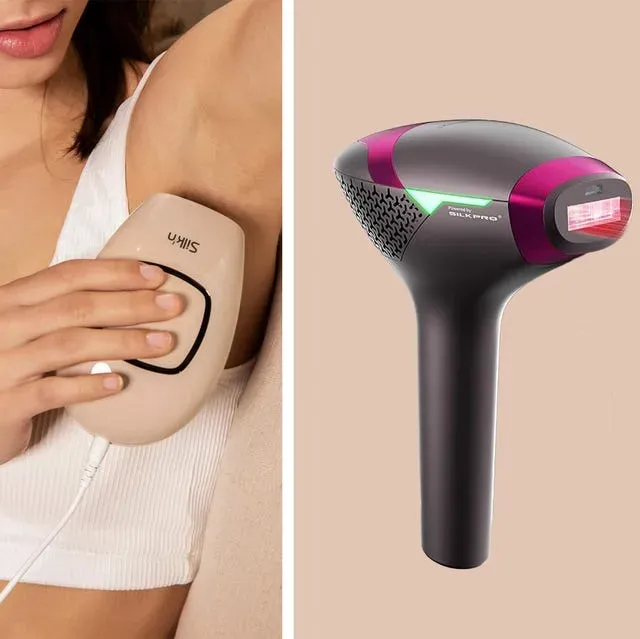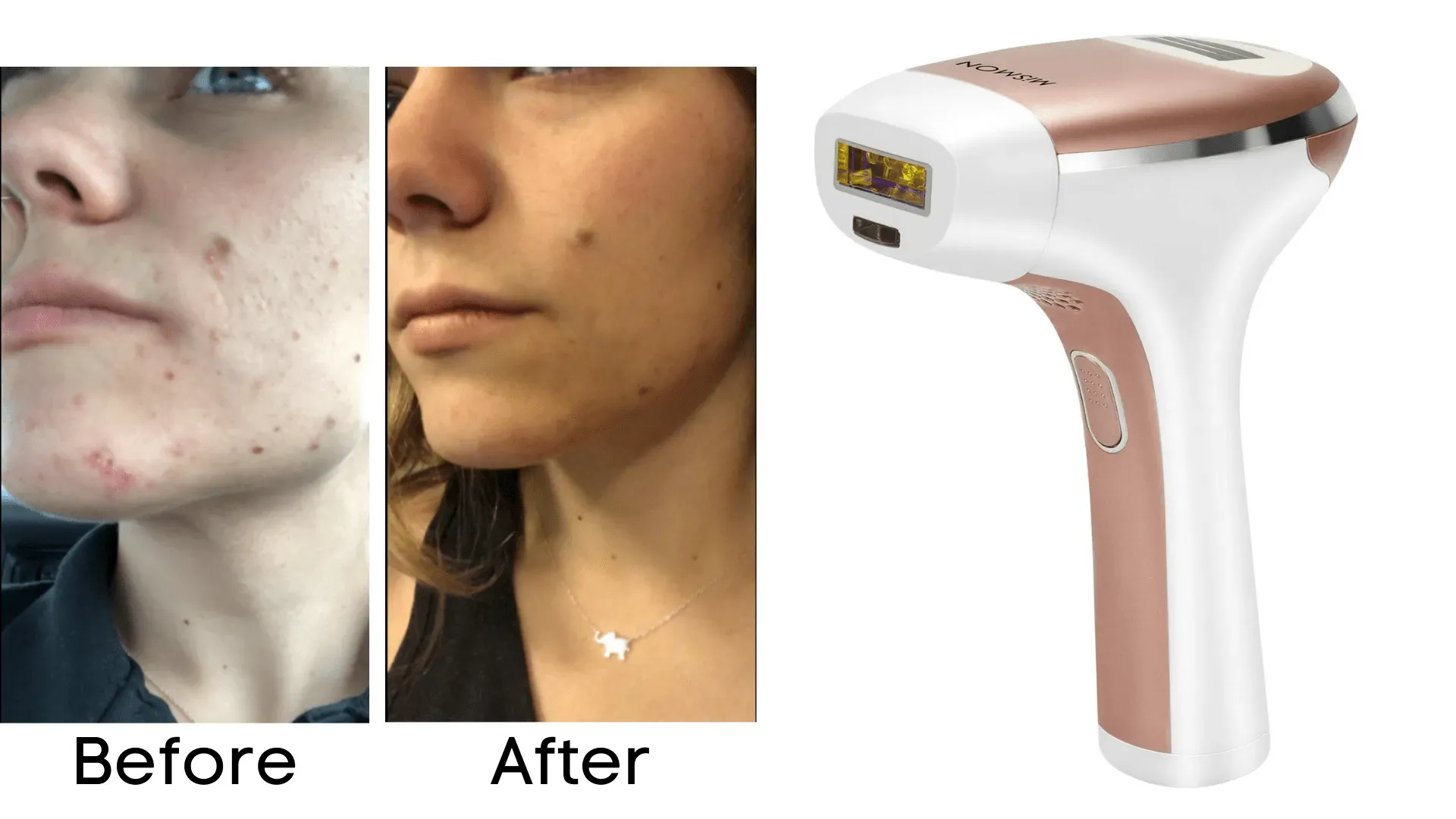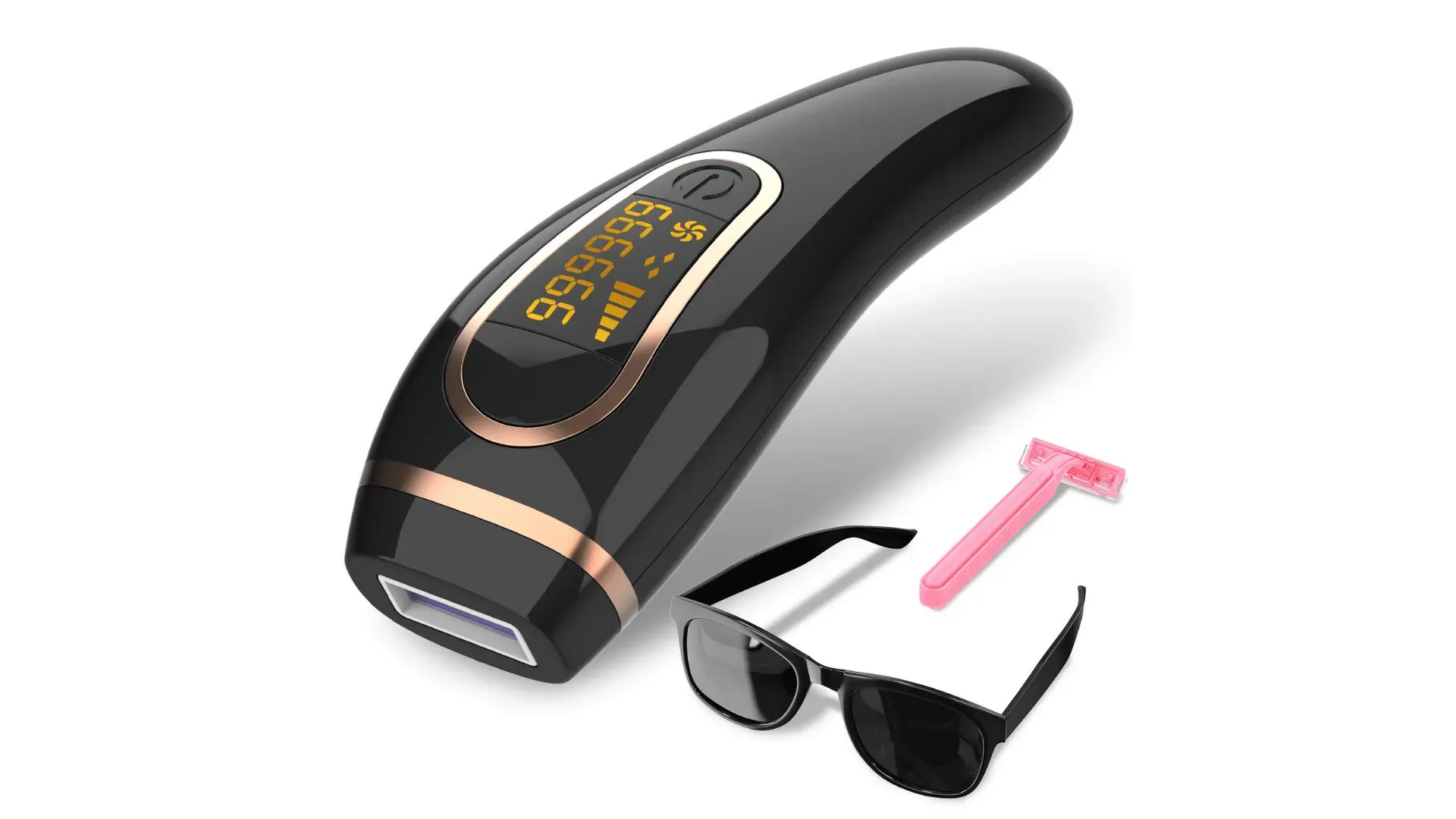Table of Contents
Tired of the endless cycle? Shaving nicks, painful waxing appointments, stubble that seems to reappear minutes after you deal with it. It feels like a part-time job just keeping unwanted hair under control. You’ve probably wondered if there’s a better way, something more permanent than the daily grind or the monthly torture session. That’s where home hair removal devices come into the picture.
Ditching the Razor: Is Home Laser Hair Removal Right for You?

Ditching the Razor: Is Home Laser Hair Removal Right for You?
The Appeal of Permanent Smoothness
so you're thinking about ditching the razor, huh? Join the club. That daily or weekly battle with stubble, the ingrown hairs, the sheer *time* it consumes – it's enough to make anyone look for an exit strategy. Home laser hair removal promises freedom from all that. Imagine smooth legs or underarms without the constant upkeep. It sounds pretty great, right?
It’s not just about convenience, either. For many, it's about comfort and confidence. No more hiding irritation bumps or planning your outfits around whether you remembered to shave. The idea is to significantly reduce hair growth over time, potentially leading to long-lasting results that traditional methods just can't touch. It's a big investment upfront, but the promise of less hassle down the line is a powerful draw.
Understanding How it Works (and If it Works for You)
Before you jump in, let's talk basics. Most home devices aren't true lasers like you'd find in a clinic. They use Intense Pulsed Light (IPL). Both work by targeting the pigment (melanin) in the hair follicle. The light energy turns to heat, damaging the follicle and inhibiting future growth. The key here is melanin.
This is where the "Is Home Laser Hair Removal Right for You?" question really hits. Because these devices target pigment, they work best on darker hair against lighter skin. The bigger the contrast, the more effectively the light can find and heat the hair follicle without heating the surrounding skin. If you have very light blonde, red, gray, or white hair, or if you have darker skin tones, these devices are generally not recommended or effective. It’s not a one-size-fits-all solution, and being realistic about your hair and skin color is crucial.
- Ideal Candidates:
- Light to Medium Skin Tones
- Dark Brown or Black Hair
- Less Ideal Candidates:
- Dark Skin Tones (Higher risk of burns/discoloration)
- Very Light Blonde, Red, Gray, or White Hair (Not enough pigment to target)
Weighing the Commitment and Reality
So, you've checked the skin/hair type box. Great. But ditching the razor with a home device isn't a magic wand you wave once. It's a process. You're looking at multiple treatment sessions over several months to see significant results. Hair grows in cycles, and you need to catch the follicles in the right phase for the treatment to be effective. This requires patience and consistency.
Also, consider the time each session takes and the potential discomfort. While marketed as painless, some people report feeling a warm zap or flicking sensation, especially on sensitive areas. And while results can be long-lasting, they are often a significant *reduction* in hair growth, not necessarily complete, permanent removal everywhere forever. You might need occasional touch-ups. It's a commitment of time, money, and effort, so you need to be prepared for the journey, not just the destination.
Decoding the Tech: Finding the Best Home Laser Hair Removal Machine

Decoding the Tech: Finding the Best Home Laser Hair Removal Machine
Navigating the Specs and Features
so you've figured out if home hair removal is even on the table for you based on your skin and hair type. Now comes the fun part: trying to make sense of all the gadgets out there claiming to be the **best home laser hair removal machine**. It feels like everyone has a different number of flashes, energy levels, and fancy-sounding features. What do you actually need to pay attention to? You’re looking for power, yes, but also usability, safety features, and frankly, whether it covers enough area efficiently without feeling like a chore. It’s not just about the biggest number; it’s about the right balance for your needs and budget.
The Lineup: Reviews of the Best Home Laser Hair Removal Machines

The Lineup: Reviews of the Best Home Laser Hair Removal Machines
Putting Devices to the Test (Sort Of)
Alright, so you've navigated the murky waters of understanding skin tones and hair types and you think you're a good candidate. You've also got a handle on what those random numbers and features on the box actually mean. Now for the part where you actually have to pick one. Walking into this market, it feels like everyone claims to be the **best home laser hair removal machine**. It’s a jungle out there, filled with promises of silky-smooth skin after just a few zaps. We've sifted through some of the more talked-about and seemingly effective options to give you a clearer picture of what's actually worth your hard-earned cash.
Using Your Best Home Laser Hair Removal Machine: Tips for Success

Using Your Best Home Laser Hair Removal Machine: Tips for Success
Prep Work is Not Optional
so you've unboxed your shiny new device, maybe even what you hope is the **best home laser hair removal machine** you could find. Don't just point and shoot. Seriously, this isn't like using a flashlight. Proper preparation is the difference between decent results and wasted effort (or worse, irritated skin). First things first: shave the area you plan to treat. The device targets the pigment in the hair follicle *below* the skin's surface. Surface hair just absorbs the light, potentially causing burns and smelling like burnt hair, which, trust me, is not a pleasant spa-like aroma. Shave right before your session.
Also, clean the area thoroughly. No lotions, no oils, no deodorant if you're doing your underarms. These can interfere with the light's effectiveness and potentially cause skin reactions. And for the love of smooth skin, do a patch test first. Every device says it, but people skip it. Zap a small, inconspicuous area and wait 24-48 hours. See how your skin reacts. Redness is normal, but extreme pain, blistering, or lasting discoloration? Stop. Your skin might not be compatible with that particular device or method.
Executing the Treatment Correctly
Now for the main event. Read your device's manual. Yes, the actual paper thing or PDF. They aren't just suggestions; they contain crucial information about frequency, intensity levels, and how to hold the device correctly. Most require direct contact with the skin. Don't just hover it over the area. Overlap pulses slightly, but don't zap the exact same spot multiple times in one session – you're trying to treat the follicle, not fry your skin like an overcooked sausage. Work in a grid pattern if that helps you keep track. Consistency across the treatment area is key for even results.
Start on a lower intensity setting and gradually increase it as your skin tolerates it. More power isn't always better if it means pain or damage. Listen to your skin. If it feels like more than a mild flick or warmth, dial it back. Treating areas like the bikini line or underarms might be more sensitive than legs. Adjust accordingly. And remember, patience. You won't see all the hair fall out after one go. It takes weeks, sometimes months, of consistent sessions to notice significant reduction. Think of it as a marathon, not a sprint.
Pre-Treatment Checklist | During Treatment | Post-Treatment Care |
|---|---|---|
Shave the area | Read the manual | Avoid sun exposure |
Clean and dry skin | Start low, go slow | Soothe with aloe vera/lotion |
Perform a patch test | Overlap pulses slightly | Avoid hot baths/showers immediately |
Avoid lotions/oils | Treat consistently | Be patient for results |
Consistency and Aftercare Matter
You finished a session. Great. Now what? Aftercare is just as important as prep. Your skin might be a little red or sensitive. Avoid direct sun exposure on the treated areas, especially right after. Use a broad-spectrum SPF if you're going outside. UV radiation can cause hyperpigmentation on sensitized skin. Apply a soothing lotion, like aloe vera or a gentle, unscented moisturizer. Avoid anything with harsh chemicals, retinoids, or exfoliants for a few days.
Stick to the treatment schedule recommended by your device manufacturer. Typically, this means treating every 1-2 weeks for the initial phase. Skipping sessions or treating too often won't speed things up and can actually hinder results or irritate your skin. Think of it like watering a plant – consistent, appropriate care yields the best growth (or lack thereof, in this case). Once you achieve significant reduction, you might move to maintenance sessions, perhaps once every month or few months. Long-term success with your best home laser hair removal machine hinges on sticking with the program, even when you get lazy.
Finding Your Best Home Laser Hair Removal Machine
So, you've navigated the world of at-home hair removal. You understand the tech, you've seen the options, and hopefully, you have a clearer picture of what might work for you. The truth is, there isn't a single "magic bullet" device for everyone. The **best home laser hair removal machine** for you depends on your specific skin tone, hair color, budget, and patience level. Results take time, consistency is key, and some devices simply won't be effective for certain individuals. It’s an investment, both in money and effort. Do your research, check those compatibility charts, and manage your expectations. Ditching the razor is possible, but it requires making an informed choice about the tool you use to get there.
